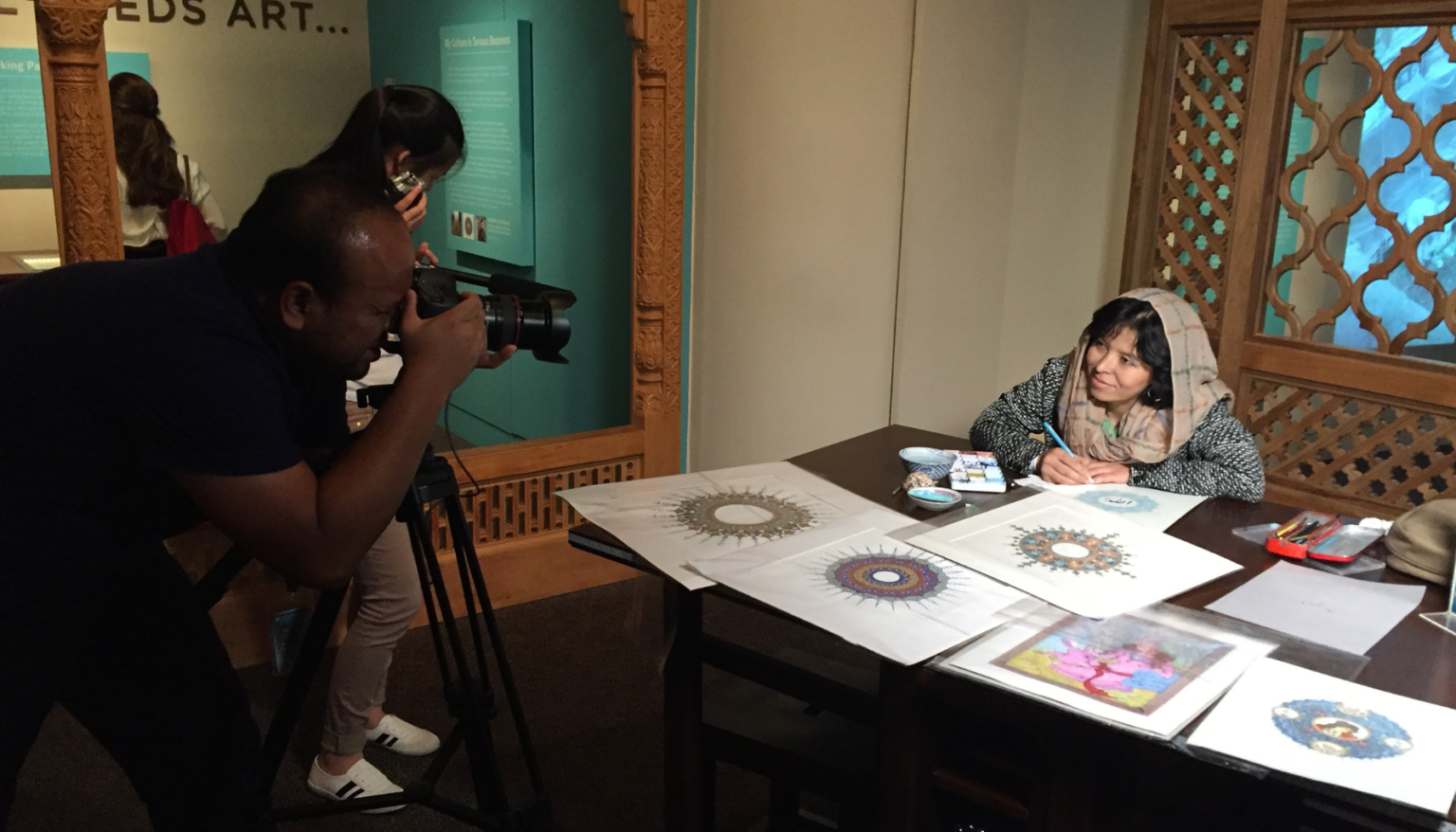Sughra: Colors of Freedom in the Face of Taliban Rule
Sughra Hussainy, an Afghan artist, specializes in traditional miniature painting and illumination. Trained at Kabul’s Turquoise Mountain Institute and later earning a master’s from the Maryland Institute College of Art, her work merges historic Afghan craftsmanship with modern themes. Each piece reflects the resilience and beauty of Afghan culture while telling stories of survival and hope. Beyond her art, Sughra is dedicated to empowering women through education and has shared her skills globally through exhibitions and workshops.
In 2016, I travelled from Kabul to the United States to participate in an art exhibition at the Smithsonian Institute. It was a success — interviews, publicity, and even a photo with Laura Bush. But when the Taliban discovered this, they were enraged. A woman artist with a personal exhibition in the U.S., travelling alone, was too much for them to tolerate. As a Hazara and a Shia Muslim, they deemed me an infidel, or Kafir, and declared that anyone who killed me would be rewarded by God.
Upon my return to Kabul, I began receiving calls from unknown numbers, threatening me. One person even said they would drag my artwork into the street, burn it, and burn me with it as a lesson to other women. Fear took over my life. I limited my time in public. I remember having to bring something to my art school, Turquoise Mountain. I carefully planned my route, changing buses three times to make it harder for anyone to follow me. But as I got off the bus and walked down the street, I saw two men in black clothes and scarves trailing me like shadows. I’m small, and they could have easily kidnapped me. As I passed near a mosque, I was relieved to see a Muharram (memorial day) festival taking place. The streets were full of people, mostly women and children. I ran into the crowd, and thankfully, the men couldn’t follow me because they couldn’t be near women.
When I finally arrived at school, my face was pale with fear. But I didn’t tell anyone what happened—I wasn’t sure who I could trust. I called my brother, and he told me to stay at school until all the classes were over. He advised me to leave surrounded by a large group of people. I quickly changed my skirt and scarf so they wouldn’t recognize me and returned home safely.
A couple of months later, I traveled to the USA again for more exhibitions. On my way to the airport, I was in an Uber when my brother called. “Do not come back home,” he said, “I want you to live.” He knew that if I returned, they would kidnap and kill me, making an example of me to stop other women from following my path. That was the moment I made the biggest decision of my life. I got into that car thinking I was headed back to Kabul, but I got out realizing I had to figure out how to build a new life in the USA. I had no money, no friends, and my English was nonexistent.
The people I met at the exhibition connected me with the Asylee Women Foundation, which provided me with invaluable support during those first two years—helping with housing, finances, English classes, asylum applications, and job searching.
Art
I lost both my parents at a young age—my dad when I was nine and my mum when I was fourteen. My brother and I had to weave silk carpets to support ourselves. My teenage years were filled with grief and depression, and I wore mostly gray, withdrawn in silence.
Everything changed when I discovered art. Art became my refuge, my voice. It allowed me to express what words could not. Today, I teach art at the Smithsonian Institute, because I believe in its power to connect people and transform lives.
Women and Education
Growing up in Afghanistan, education was always a struggle. When the Taliban took power, they closed girls’ schools, and I was unable to continue my studies. When schools reopened, many women didn’t return, but I did. I knew education was my path to freedom.
As a girl, you're controlled by your father, and later by your husband or son. I remember making a simple doll as a child, made from a stick and fabric scraps. It had no arms, no legs, no eyes — a lifeless figure. To me, this represented how many women feel in my country — powerless, controlled by men. I continued my education in the U.S., earning a master’s degree at the Maryland Institute College of Art (MICA) on a full scholarship. Now, when I speak about my art and my journey, I do so with the hope of giving a voice to the women of Afghanistan and to other immigrant women in the U.S. This, to me, is my most important work.












